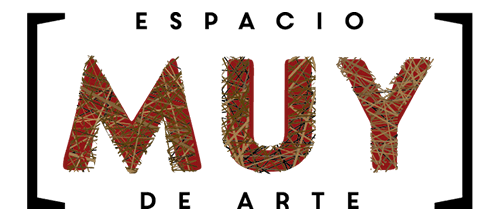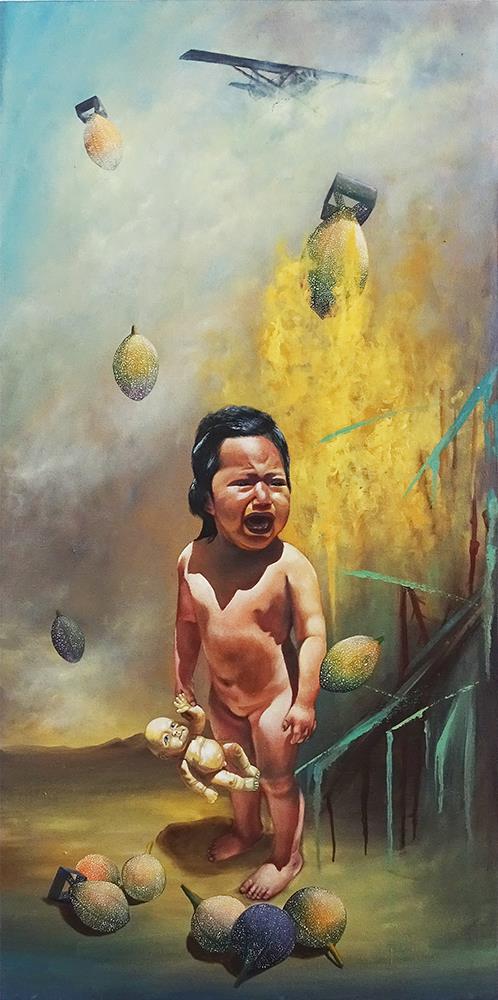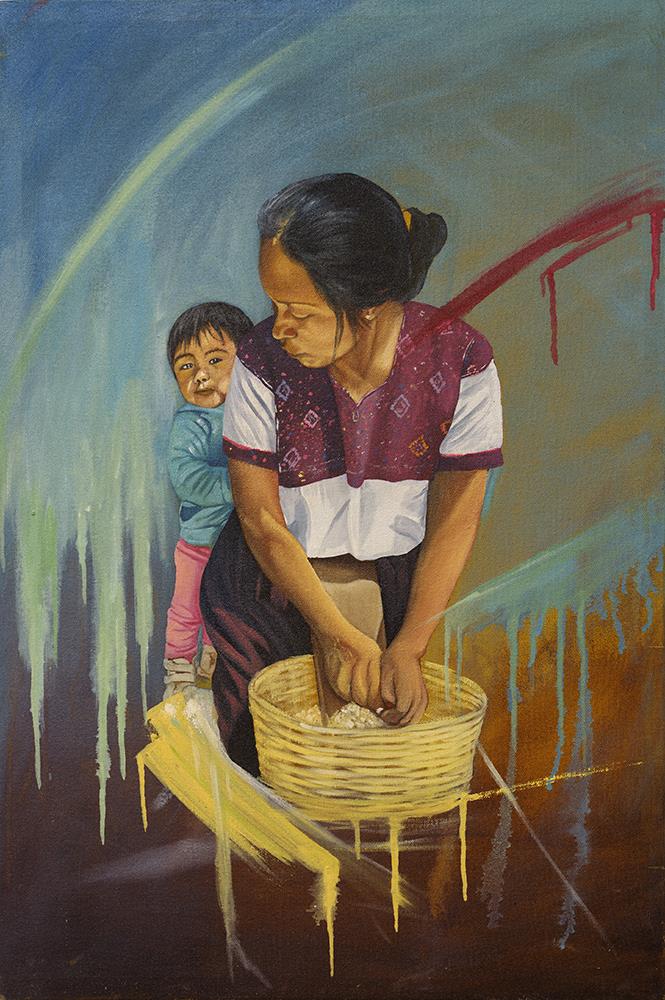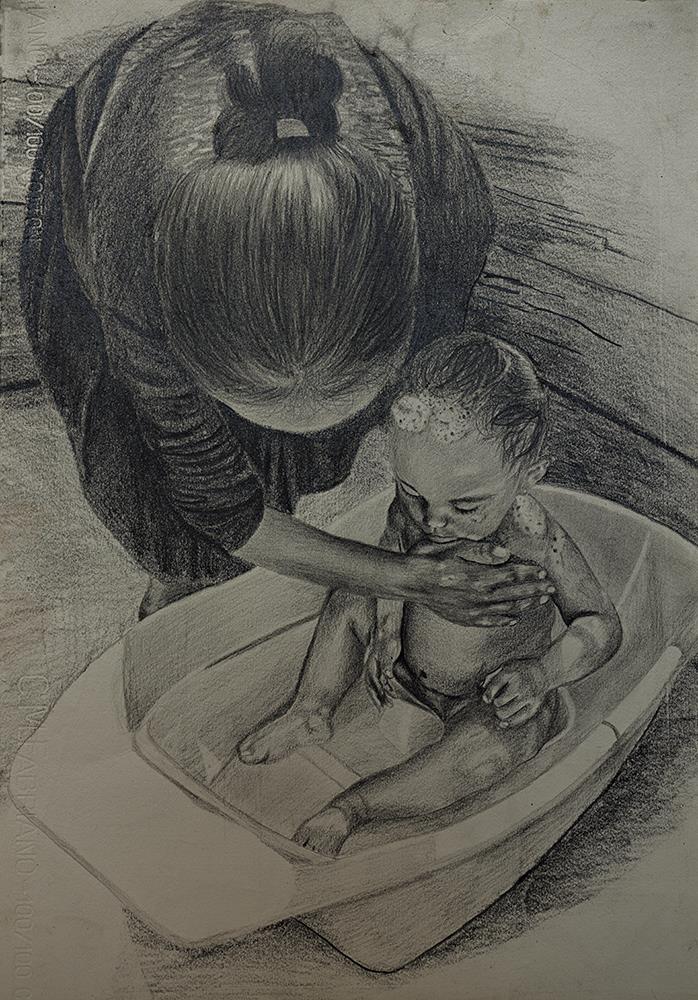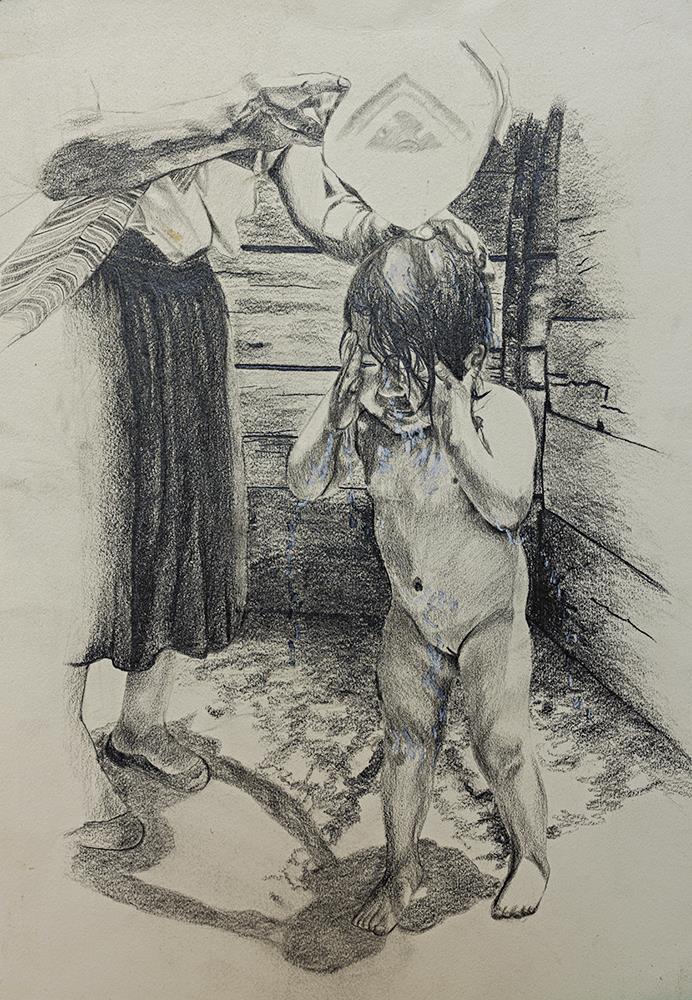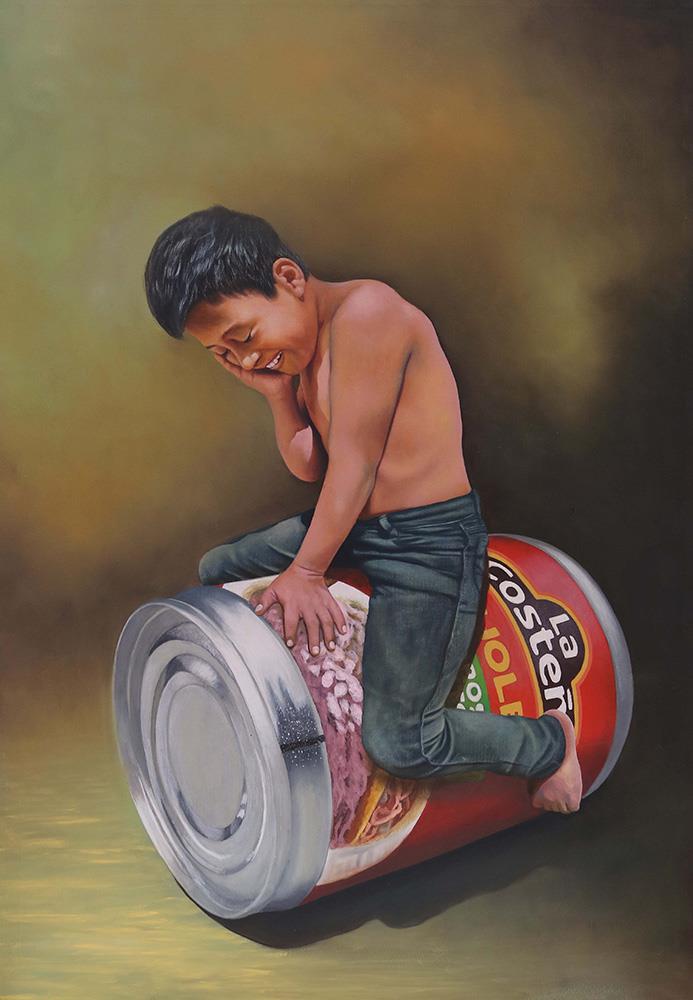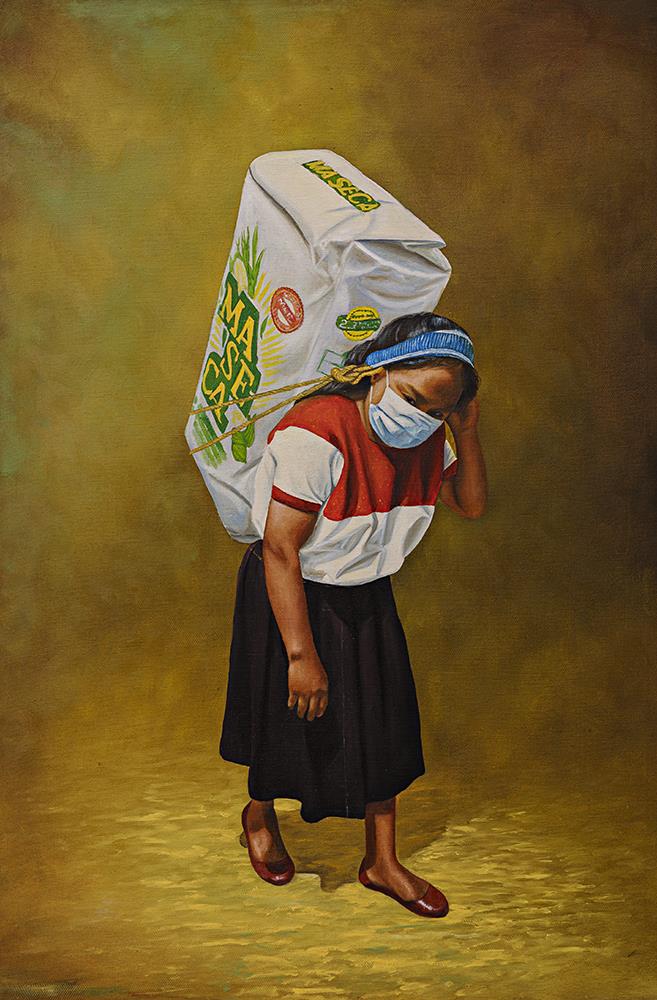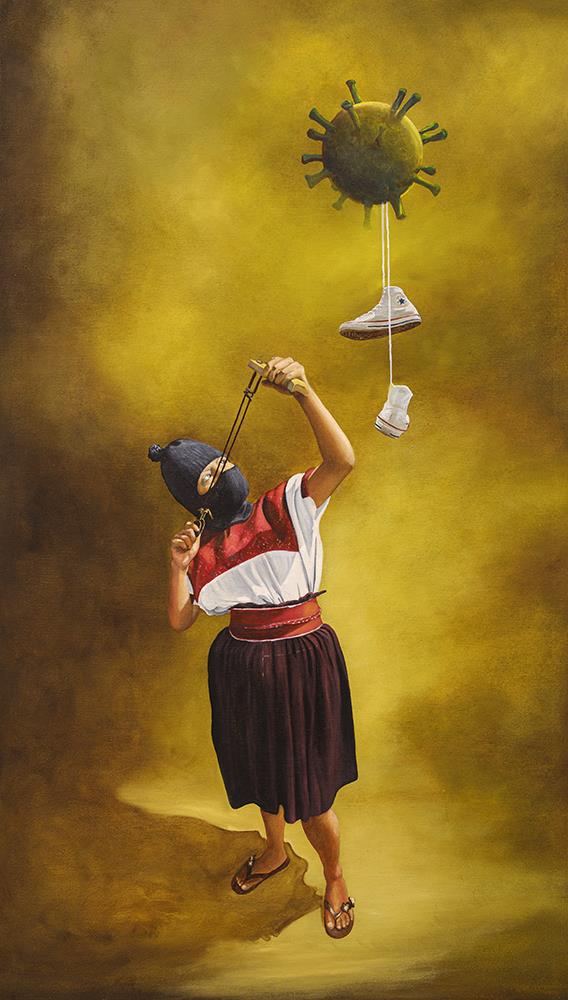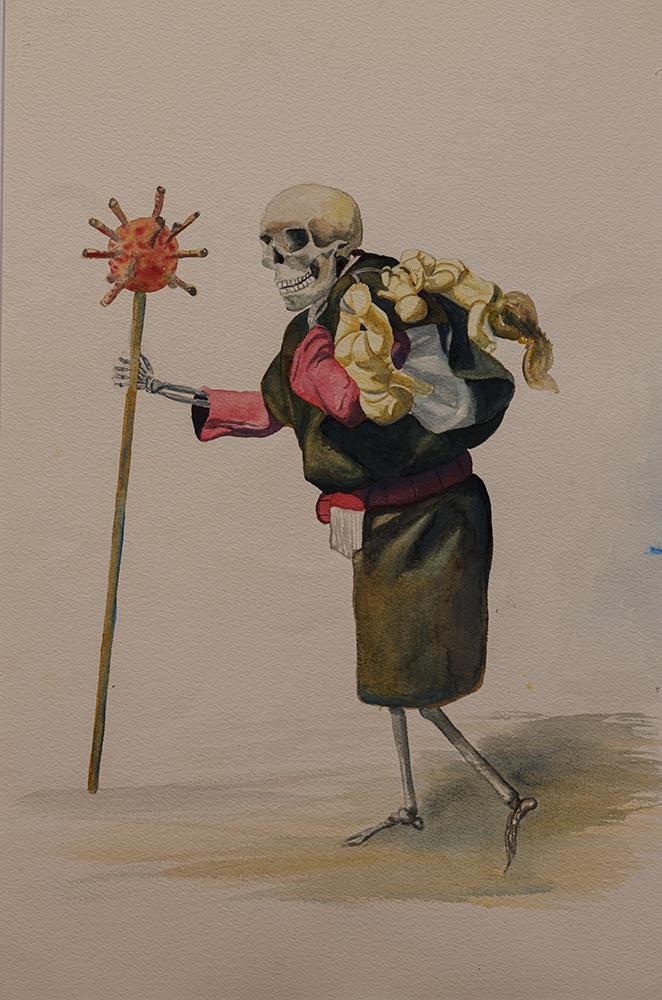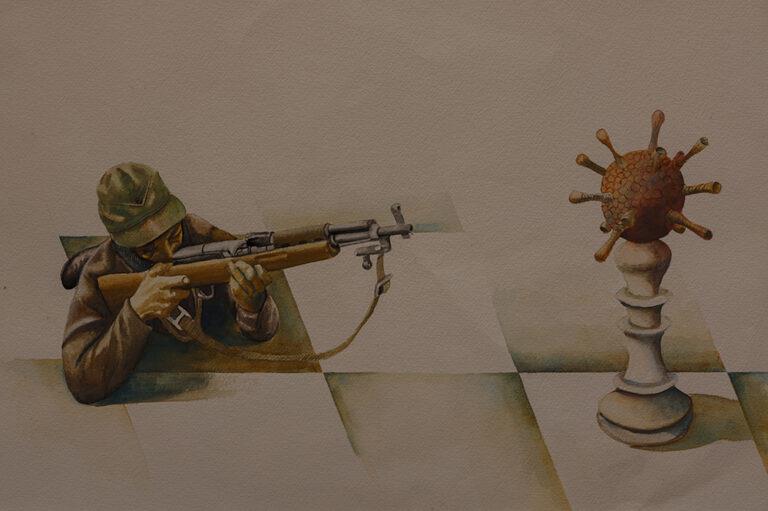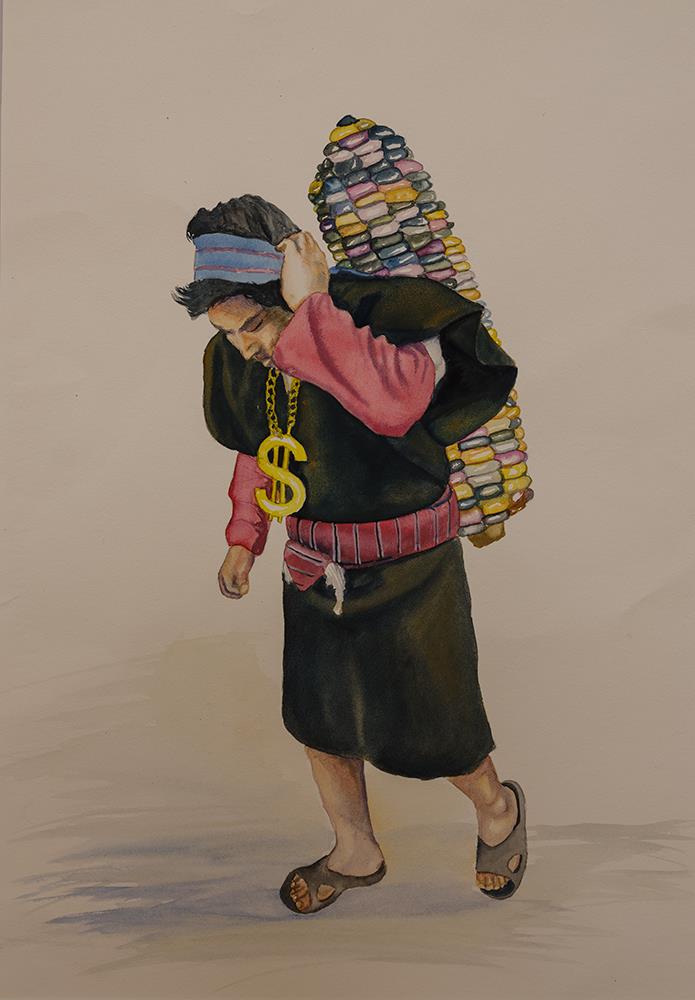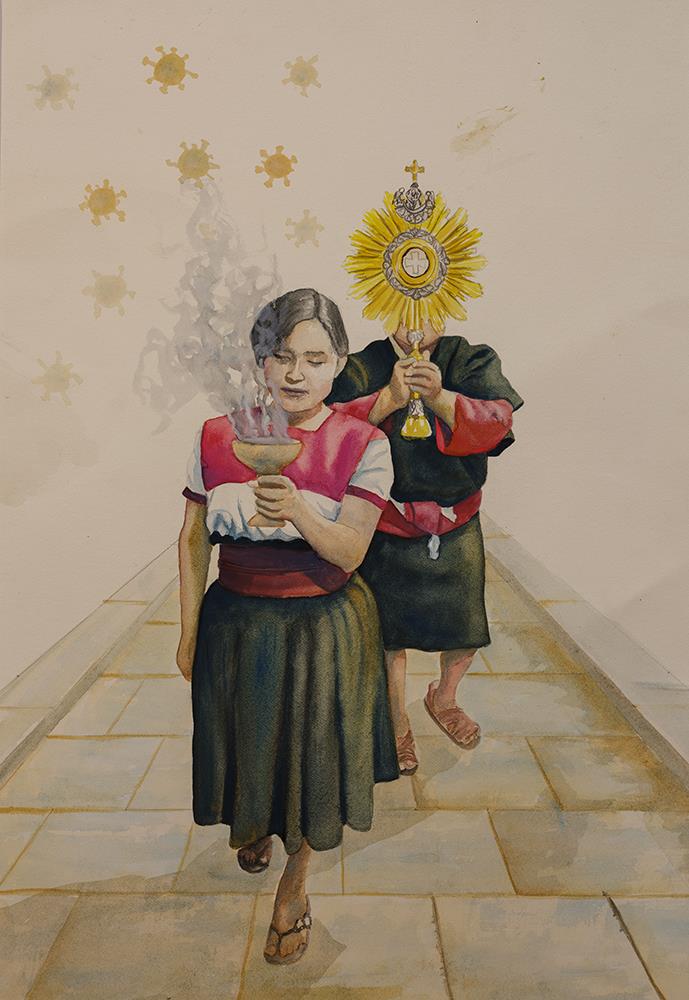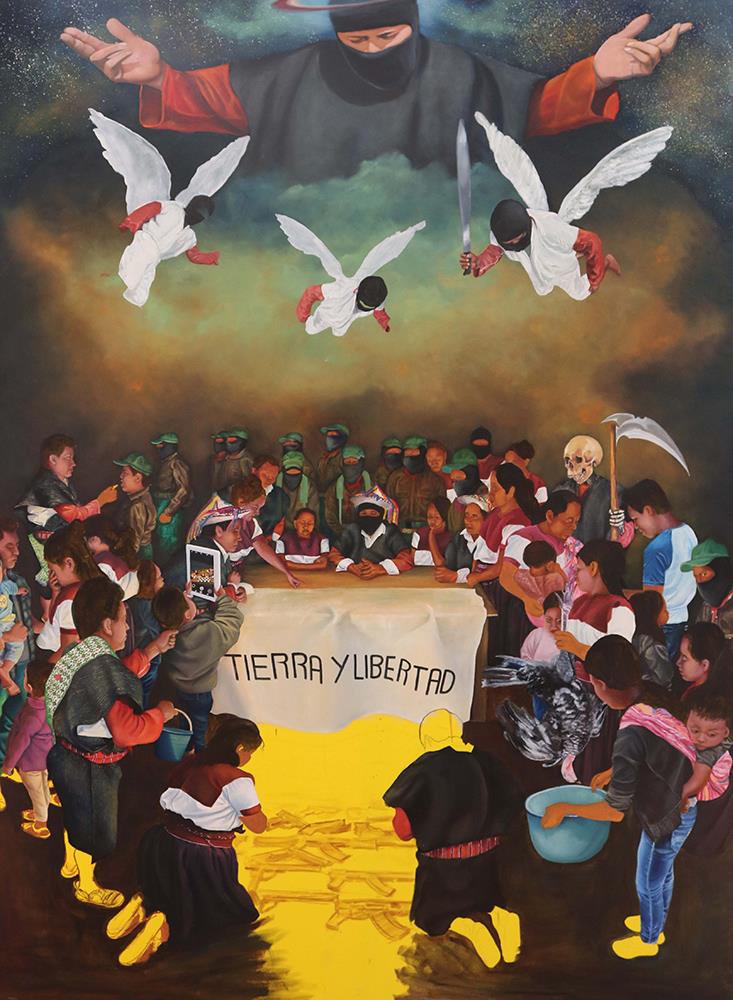We were amazed by the precise and beautiful technique of the painter Raymundo López (San Andrés Larráinzar, Chiapas; 1989). As a colleague of his said, “you don’t finish learning the technique at school” since it is talented and a lot of practice with commitment. Reymundo, talented, does not stop experimenting and growing constantly.
We remain as alive by the contents of his work, in which he explores themes of his life with great honesty and deep emotion. As we will see below, Raymundo started life in tumultuous times, he suffered losses – his mother passed away in 2015 – but he started his own family with great joy; He had struggled to attend the University of Sciences and Arts in Tuxtla Gutiérrez (he graduated in 2017), he recently became a temporary migrant; never without stopping painting or losing his great appetite for life. The present is a solo exhibition, Painting childhood memories. Raymundo lived through the Zapatista uprising in 1994, in San Andrés Sakamch’en de los Pobres / Larráinzar, as the son of leaders of this organization. He experienced the terror of attacks by his own government then; years later he experienced the problematic polarization of his people. With his work, Ray testifies to an idealistic young creator who includes in his practice the recording of the most important events in his town, in Mexico and even in the world.
There, the surprising movement that the artist makes in this exhibition: he takes up the crisis of the pandemic in metaphorical terms of the uprising. Thus it opens the door for us to appreciate the cyclical time of the Mayan culture. And it demonstrates the potential of art in the hands of peoples to recreate by narrating their own history with their own symbolism.
In these months in which we have depended on digital communication, Raymundo López’s work has gone viral including Tsotsil, Tseltal, etc. speaking people. in Chiapas and abroad. He tells us about the current reality, with clarity, great intelligence and humor.
This exhibition was the result of a collective curation by the Galería MUY.
The painter thanks his parents and family, including Pati and Monse, and the Galería MUY.
Artworks
Granadillas
Oil on canvas
100 x 50 cm
2019
“In 1994, when the fighting started, we were sheltered in a house. While we played we saw in the sky that the planes were dropping the bombs, but where they were throwing the most was on the hill. One day I asked my sister what those things were that were thrown by airplanes. She answered that they were “granadillas” I was very scared and from there I became afraid of the granadillas, because I thought they were those that were thrown by airplanes, I was very afraid of them. My sister playing would throw one at me, and I would start crying“.
Augury
Oil on canvas
90 x 60 cm
2019
The midday bath
Pencil drawings
50 x 35 cm
2019
“Now that I am a father, I see that my daughter loves to bathe, but our condition is different. They bathed me standing up with cold water, she was bathed sitting up with hot water“.
Great happiness
Oil on canvas
84.5 x 60 cm
2020
“When the uprising happened and we were refugees, they brought us food to eat. as we were children, and maybe because of hunger, I saw the huge cans of beans and when I got older I realized that they were not like that, it was because of hunger that I saw it that way“.
Unrest
Oil on canvas
84.8 x 65.3 cm
2020
“I use a conceptual realism with rhetorical figures where I capture what happened in my town, San Andrés Larráinzar, about these times of contingency. From the beginning, people supported the fumigation of public spaces. But because of the bad comments from other towns, social networks and the successive death of people, people began to change their minds and thought that spraying caused death, and all they sprayed was coronavirus! For that reason the riots and destruction began, the burning of the vehicle and always looking for a culprit. In this way I represent the riots“.
Lord of death
Watercolor on cotton paper
72.5 x 53.5 cm
2020
“This bunch of kids are school students. On the left side are three teachers. The children were very playful, they did not understand, they did not obey: these teachers had no patience with them and they beat them. He had a barbell and they were hit on the buttocks and on the head. And the children began to lose consciousness, they already had problems understanding. Then the mother went to complain to the agent because her children had been harmed. They decided to send them to the teachers, until a teacher arrived and she spoke to them, took them under the trees, gave them apples, spoke with affection and also asked God a lot to help these children, to understand, and thus they improved. , to understand. The teacher noticed that the children had nahuales – a fox and when they are foxes, one is very playful. He’s just having fun. That’s why they had that attitude. So the teacher changed their nahual to all of them, and by changing their nahual they were obedient children, they improved. That teacher lasted many years working with them, almost thirty years and ended up preparing two, two very well“.
Shooting the virus queen
Watercolor on cotton paper
37 x 56 cm
2020
“The embodied work are stories of the Zapatista compas. As they now say, they are fighting an invisible enemy, who does not see religion or political party. We are all fighting against an enemy, which is the coronavirus“.
The holy eucharist
Watercolor on cotton paper
49 x 33.8 cm
2020
“After the death of many sanadreseros by the coronavirus, the sanadresera community asked to take out the Most Holy Eucharist, together with a priest to bless and purify the streets. After the purification and the faith of the people the successive death stopped“.
The last supper
Oil on canvas
170 x 230 cm
2021
En proceso
“On December 31, 1993, a night before the uprising, a mass was celebrated. The militiamen planned how they would enter San Cristóbal. At the end of the meeting we all lived together, there was food and music, for some it was their last dinner, since many would not return to their homes with their families. The community was in the struggle at all times with the faith of God, and that is why I represented that God was also a Zapatista in the struggle, since the people felt that God was going to accompany them in the struggle“.
